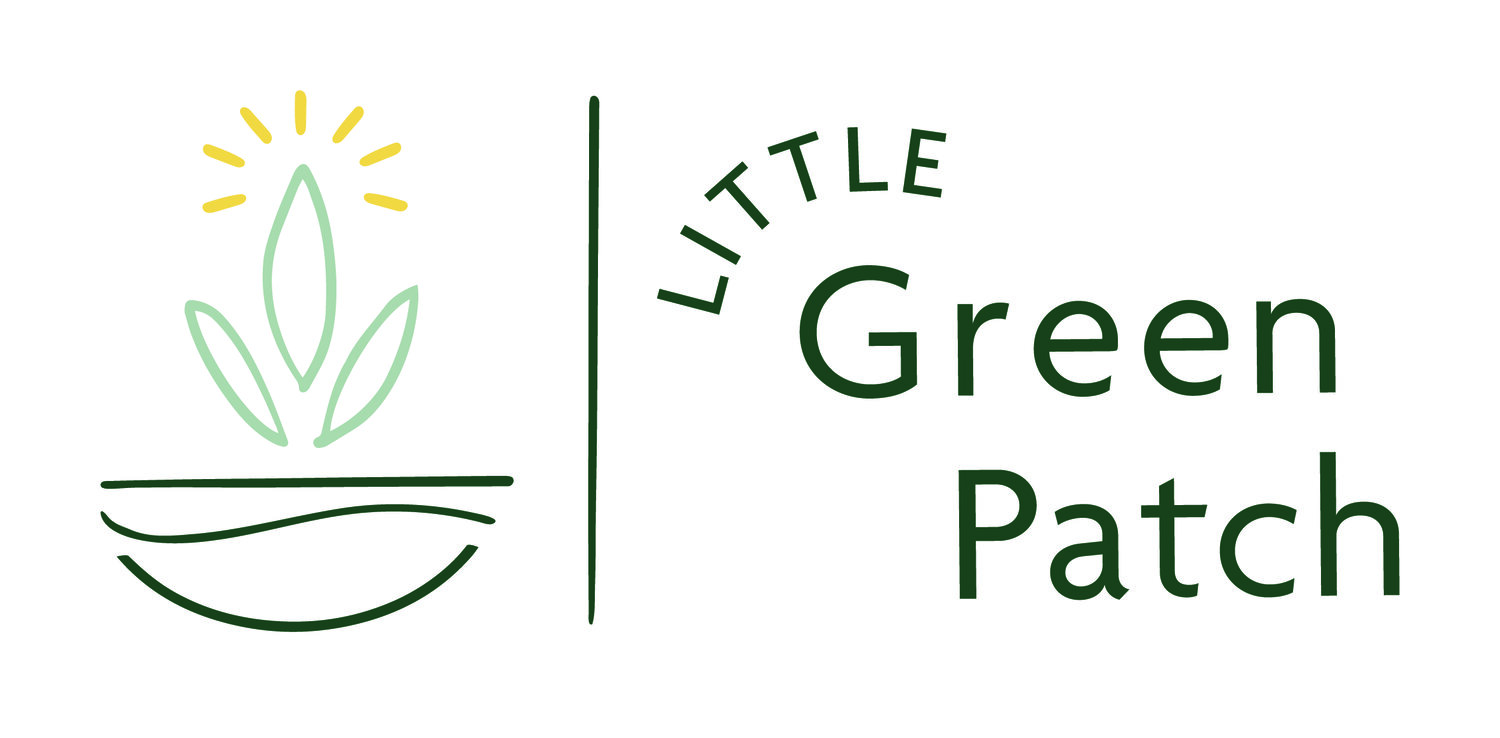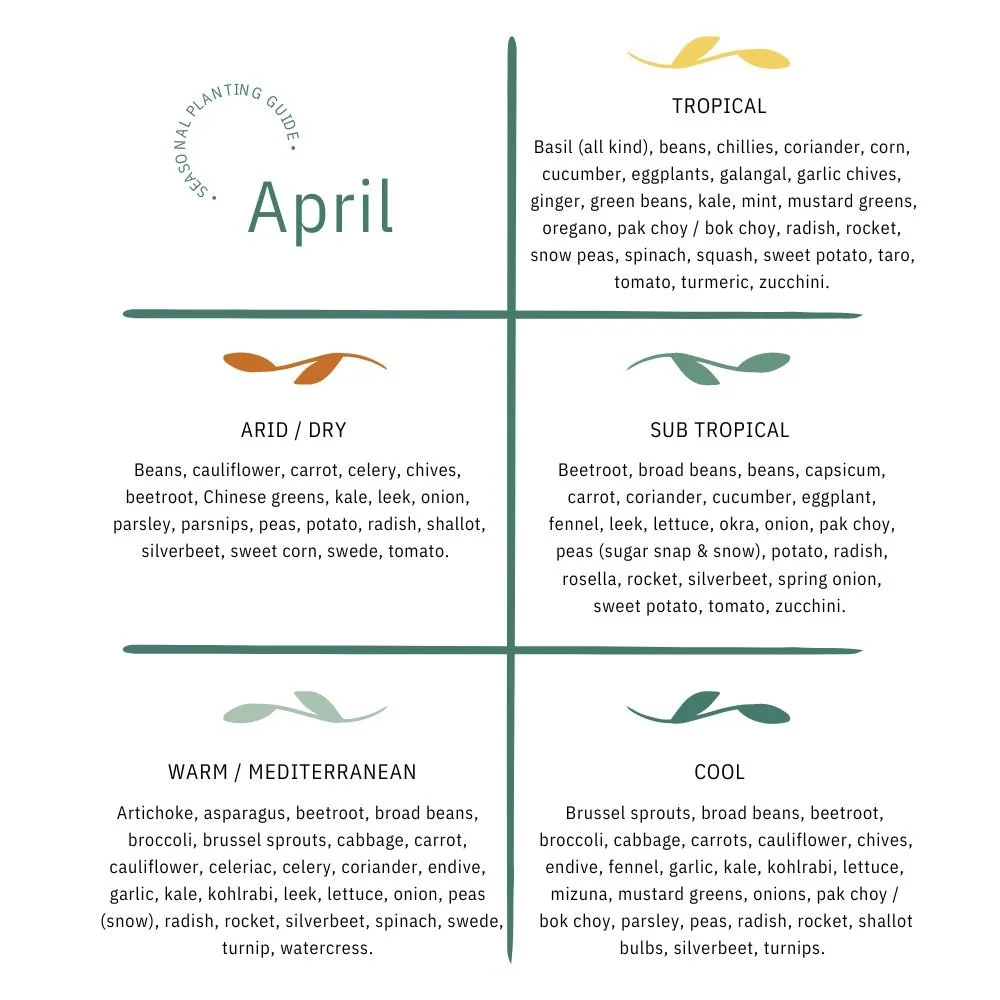REGENERATIVE URBAN GARDENING: APRIL PLANTING GUIDE FOR AUSTRALIAN CLIMATES
As the seasons shift, the urban gardener's calendar beckons with fresh opportunities to cultivate and sustain our tiny patches of green amid the urban sprawl. For those of us that live in Australia, April is a pivotal month teeming with potential. Whether you have a compact balcony, a communal plot, or an innovative indoor setup, the following guide will equip you to contribute mightily to growing your own food right at home.
What to Plant From Seed
The act of starting from seed is a profound one. It's a tangible foray into the life cycle, a tiny stake in the grand symphony of food production. In the relative warmth of April, select seeds that crave both the sun and a soil already beginning to thaw from winter's chill. Check out the Seed Raising Mix in Module 6 Lesson 1 of the Soil to Harvest Course for an in depth instruction on how to best start your seeds in a healthy environment with zero nasty chemicals.
Leafy Greens
This category of rapid growth and early-maturity offers a satisfyingly quick return on investment. Spinach, rocket, and Swiss chard thrive when sown directly in April. Their versatility in the kitchen, from salads to sautés, make them essential for any urban gardener seeking diversity in their home-grown diet. Consider mixing seeds to create a diverse and visually appealing patch of greens. I love neat and tidy rows and you can still achieve this sense of order by using the principles of intercropping.
Root Vegetables
Root crops sown from seed in April, such as carrots, beets, and turnips, have the advantage of cooler temperatures before the subterranean heat of summer swells. With the first hints of warmth, their tiny seeds will eagerly sprout, promising a harvest of earthy delights well before the summer solstice. I prefer planting these directly into soil that has been freshly topped with mature compost for best results.
What Seedlings to Plant Out
Some vegetables prefer a head start indoors before being transplanted into your outdoor patch. April is the perfect time to give these seedlings a fighting chance in the urban garden.
Tomatoes and Peppers
Tomatoes and peppers, both members of the nightshade family, benefit from a longer growing season than many frost-susceptible plants. By planting seeds indoors in March, you can now harden off and transplant seedlings in April, giving them ample time to mature before Melbourne Cup Day (a traditional plant-out date for many Australians). It's definitely worth your while to be thinking ahead (or at least planning ahead) because once your in the season it's sometimes too late to start from scratch and all you'll end up doing is heading down to the nursery to buy seedlings that potentially haven't started their life in an organic, regenerative manner.
Climbing Plants
Trellised crops like cucumbers and pole beans can be encouraged upward to save space and optimize sunlight. April is an opportune moment to start these organic vines, nurturing them indoors before the pull of the great outdoors summons them to new heights.
Successional Planting Tactics
The concept of succession planting is an elegant tool in the urban gardener's belt. By planting a new round of seeds or seedlings as soon as one harvest ends, you can maintain a steady food supply all season long without wasting valuable growing time.
Fast-Growing Herbs
Basil and coriander are prime candidates for succession planting. They bolt quickly in the heat, so ensure that you always have a new batch coming in as others go to seed. This way, you'll have fresh herbs for your culinary adventures without interruption. I like to start my next round of seeds as soon as my seedlings hit the soil this way I know I am only a couple of weeks behind.
Seasonal Greens
In the leafy green family, successional sowing is particularly effective for maintaining a regular supply of edible leaves. As your first planting of spinach or lettuce is consumed, fill in the gaps with new plantings for a continuous and abundant crop. I also like to try not to harvest the entire plant of lettuce but rather just picking the leaves to keep the plant giving more right till the end. Remember to let one of your best lettuce plants go to seed as well so you can store the seeds for the next season.
April Gardening Jobs
Preparation and ongoing maintenance are as crucial as the act of planting itself in the urban garden. Here are some essential tasks to tackle this April:
Soil Health
Prepare your soil with compost and organic matter. Healthy soil is the foundation of a bountiful garden. Consider mulching to retain moisture and suppress weeds, a simple but effective technique for sustainably nurturing your plants. In the winter months I always preference a thicker layer of compost as my mulch and I save the straw for summer.
Watering Best Practices
Establish a regular and efficient watering routine, keeping in mind that shorter, deeper watering sessions are often better than frequent shallow ones. Install a water-saving drip system if possible, or collect and recycle rainwater to quench your garden's thirst.
Pest and Disease Management
Stay vigilant for pests and diseases, nipping problems in the bud before they can wreak havoc on your plants. Organic solutions such as companion planting or homemade sprays can be powerful allies in your defense against garden nuisances. Check out the Organic Solutions in Module 8 for some of the go to preventative solutions that won't harm your family or the ecosystem your creating in the garden.
Community Engagement
Finally, take advantage of urban gardening communities. Share your successes and learn from your peers about what works best in your local, urban setting. Seek out local farmer's markets and seed swaps to further enrich your urban garden experience.
Final Thoughts …
In this intricate dance with nature, urban gardening isn't just about growing food; it's a declaration of self-sufficiency, a connection to the environment, and a commitment to sustainable living practices that empower the environment and honour the soil. By planting with intent and tending with care, you play a critical role in the collective quest to create a more sustainable and resilient future.
Remember, every radish, every basil leaf, and every calendula bloom grown in a tiny space contributes to a larger movement towards sustainability. It is this awareness and action, on a micro-level in our urban gardens, that can make a macro-impact towards a more sustainable world. Take a seed, plant it with purpose, and watch as it grows not just food, but an entire ethos of gentle stewardship and abundance.


